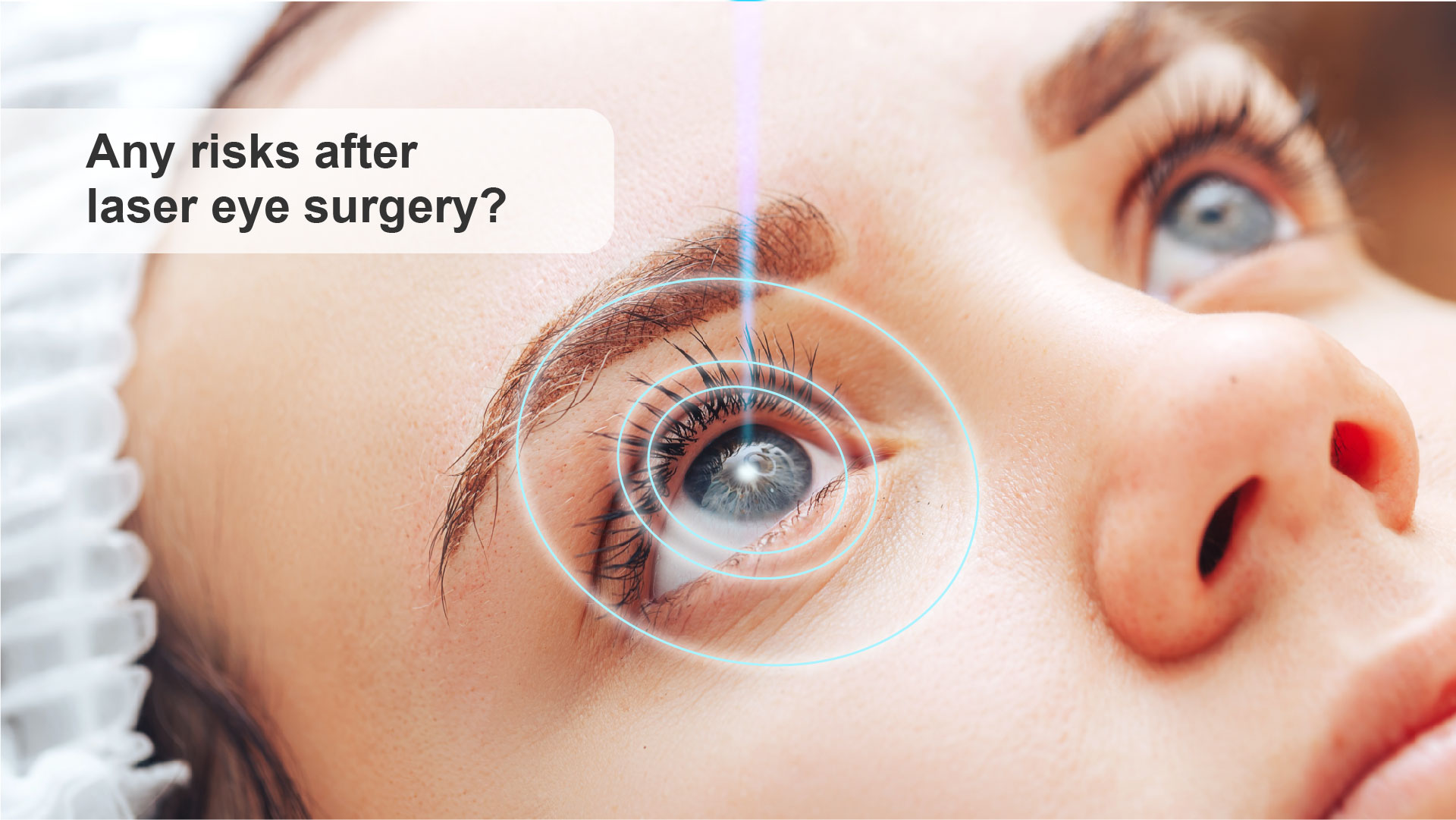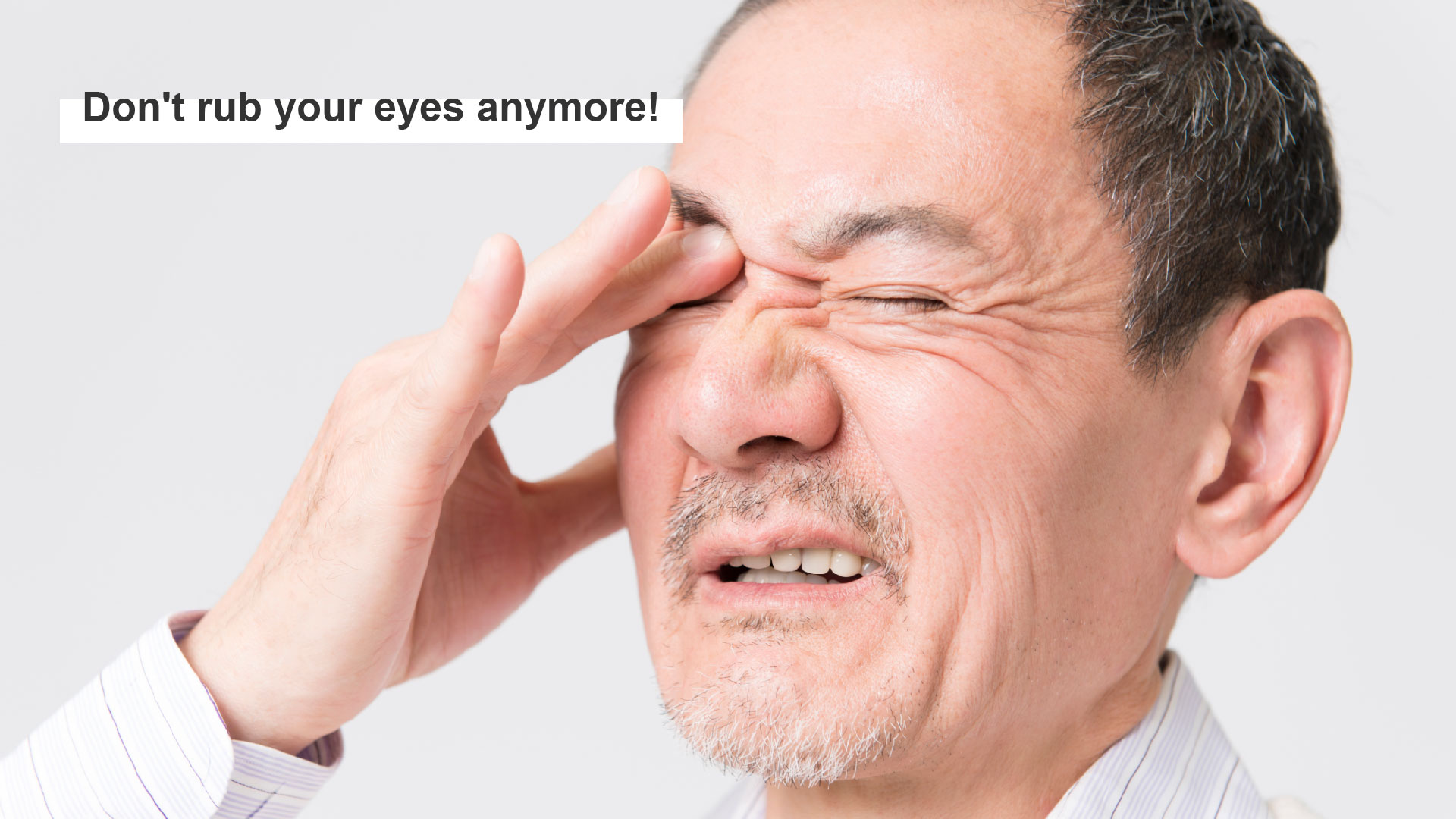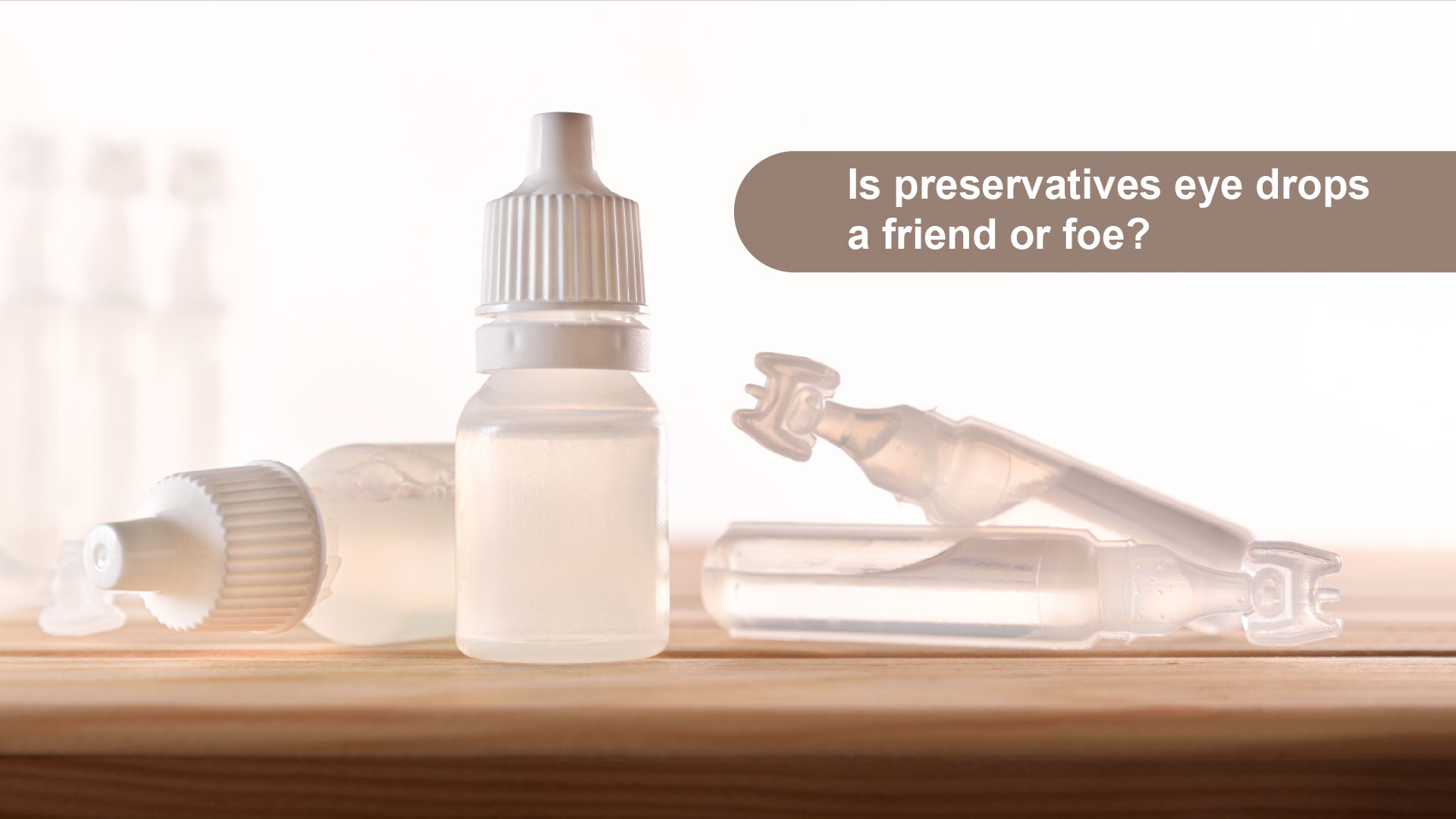Laser Eye Surgery Risk & Difference between LASIK, SMILE and PRK.
Hong Kong people have the highest myopia rate in the world. If you don’t want to wear glasses or contact lenses daily, have you considered undergoing laser eye surgery to say goodbye to glasses? In recent years, many people have undergone laser eye surgery. But do you know the difference between LASIK and SMILE? What are the risks of the surgery? Are you suitable for surgery? Let’s explain in detail the principles and risks of laser eye surgery.
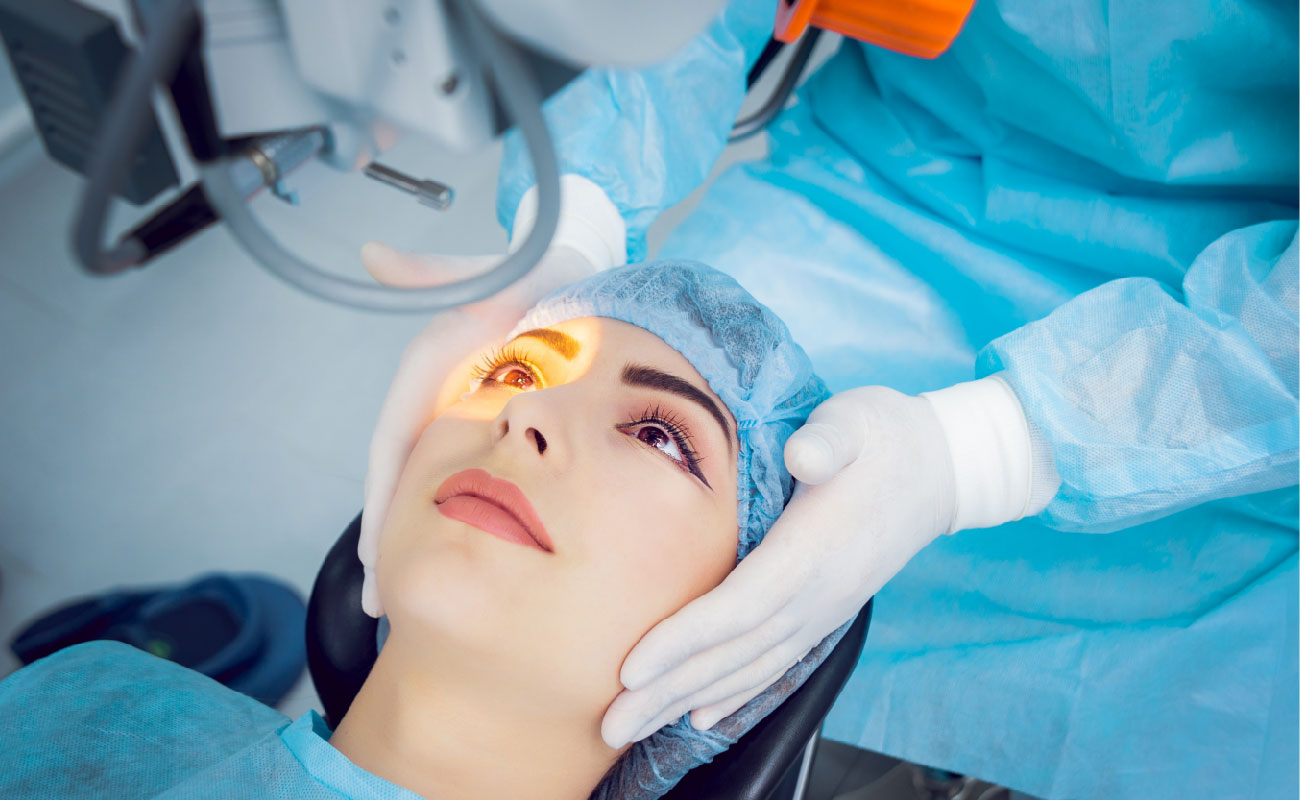
Two Important Concepts About Laser Eye Surgery
Laser eye surgery has three generations: the first-generation PRK, the second-generation LASIK, and the third-generation SMILE. The wound becomes smaller, and the recovery time becomes shorter. There are many different ways of laser eye surgery. Although they seem different, they have many common points. The two concepts are essential for all patients interested in laser eye surgery to understand clearly.
-
All laser eye surgery acts on the corneal stroma:
The cornea has five layers. No matter which laser eye surgery is used, “reducing the thickness of the corneal stroma layer” changes the corneal curvature, correcting the eye’s refractive error. The structure of the cornea from front to back is the epithelial cell layer, the anterior elastic layer (Bowman’s layer), the stroma layer, the posterior elastic layer (Descemet membrane), and the endothelial cell layer. The most muscular structure is the Bowman’s layer of the cornea.
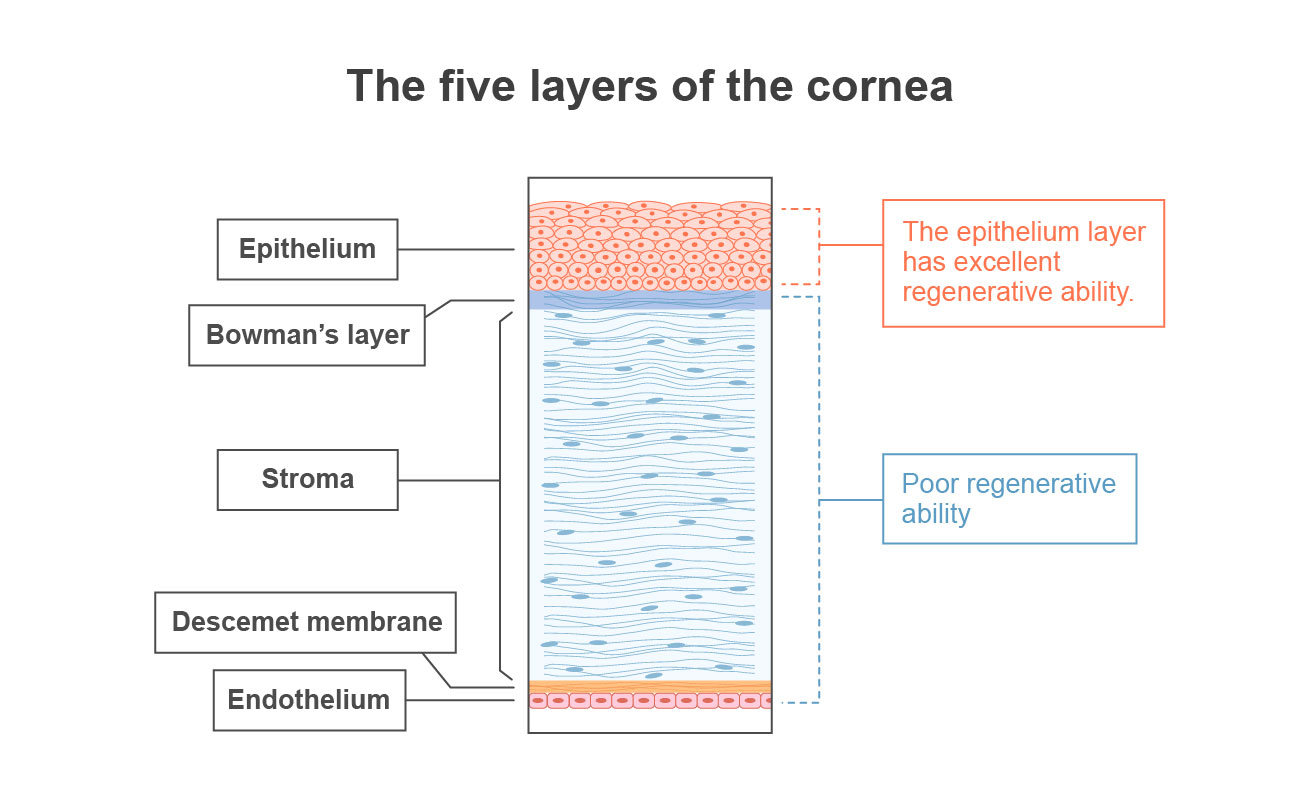
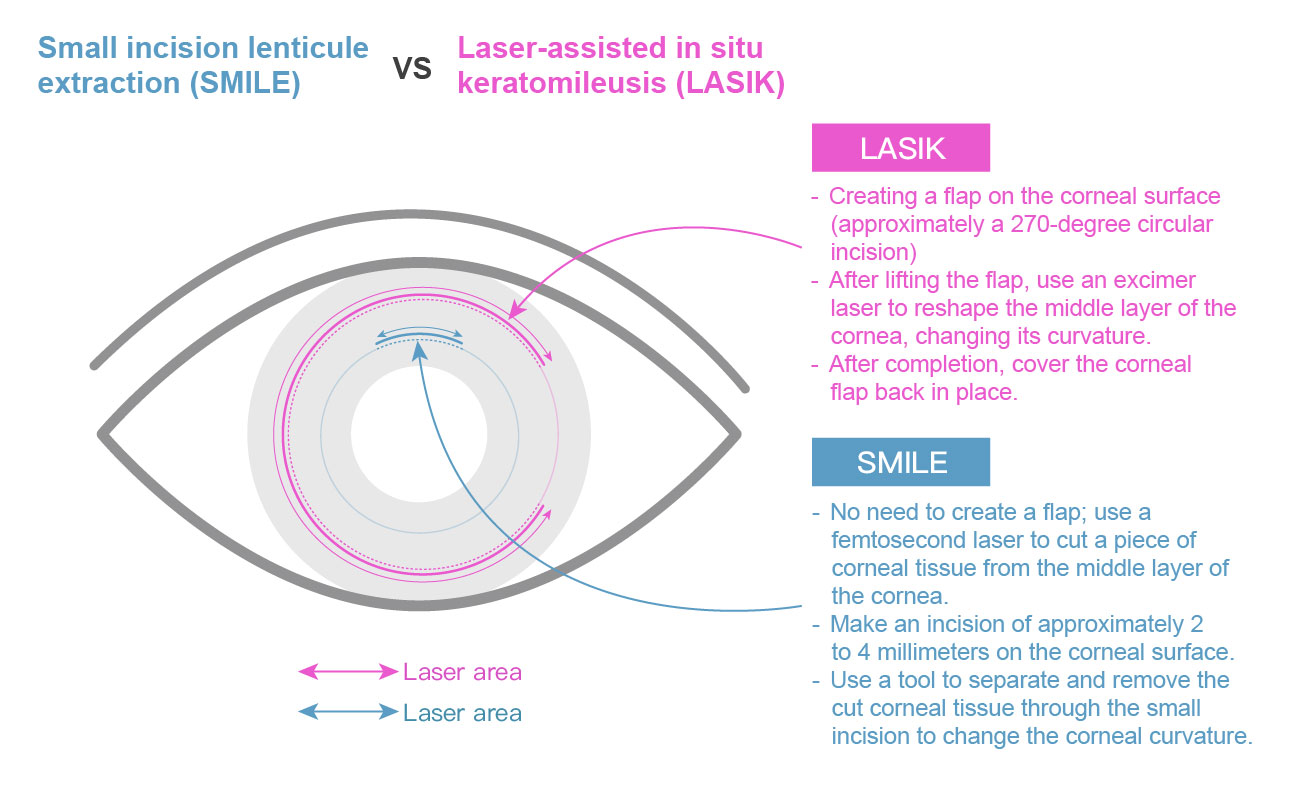
Only the epithelial cells have better regeneration ability; The Bowman’s layer, stroma layer, Descemet membrane, and endothelial cell layer don’t have any regeneration ability. If damaged, it is more difficult to recover. This characteristic is why the stroma layer is selected as the target tissue for laser eye surgery. Otherwise, the myopia degree will return if the removed corneal stroma tissue “heals” back. This is one of the reasons for the myopia regression after laser eye surgery.
No matter which laser eye surgery, it acts on the corneal stroma layer, reduces the thickness of the corneal stroma layer to change the overall corneal curvature, and then corrects myopia, hyperopia, or astigmatism. The corneal stroma layer is located inside the cornea and is covered by the corneal epithelial layer. The main difference between laser eye surgery methods is how they solve the obstruction of the corneal epithelial layer to reduce the thickness of the stroma layer located inside the cornea. Some laser eye surgeries will remove corneal epithelial cells. However, because the corneal epithelial cells have good regenerative ability, they will grow back after surgery, so the thickness of the removed corneal epithelial cells does not need to be included in the “thickness consumed by the laser.” -
Laser eye surgery is like tailoring clothes:
The degree of laser eye surgery is like tailoring a suit for your eyes. If your body shape (degree) changes in the future, the suit won’t fit anymore; if the degree changes after surgery, the degree will not be suitable. Future changes in degree mainly come from myopia rebound and secondary myopia.
Secondary myopia is related to lousy eye use habits, while myopia rebound is related to corneal healing, compensation, and biomechanical structural changes. Although different surgical methods have different probabilities of myopia rebound, none of them are 100% guaranteed not to occur.
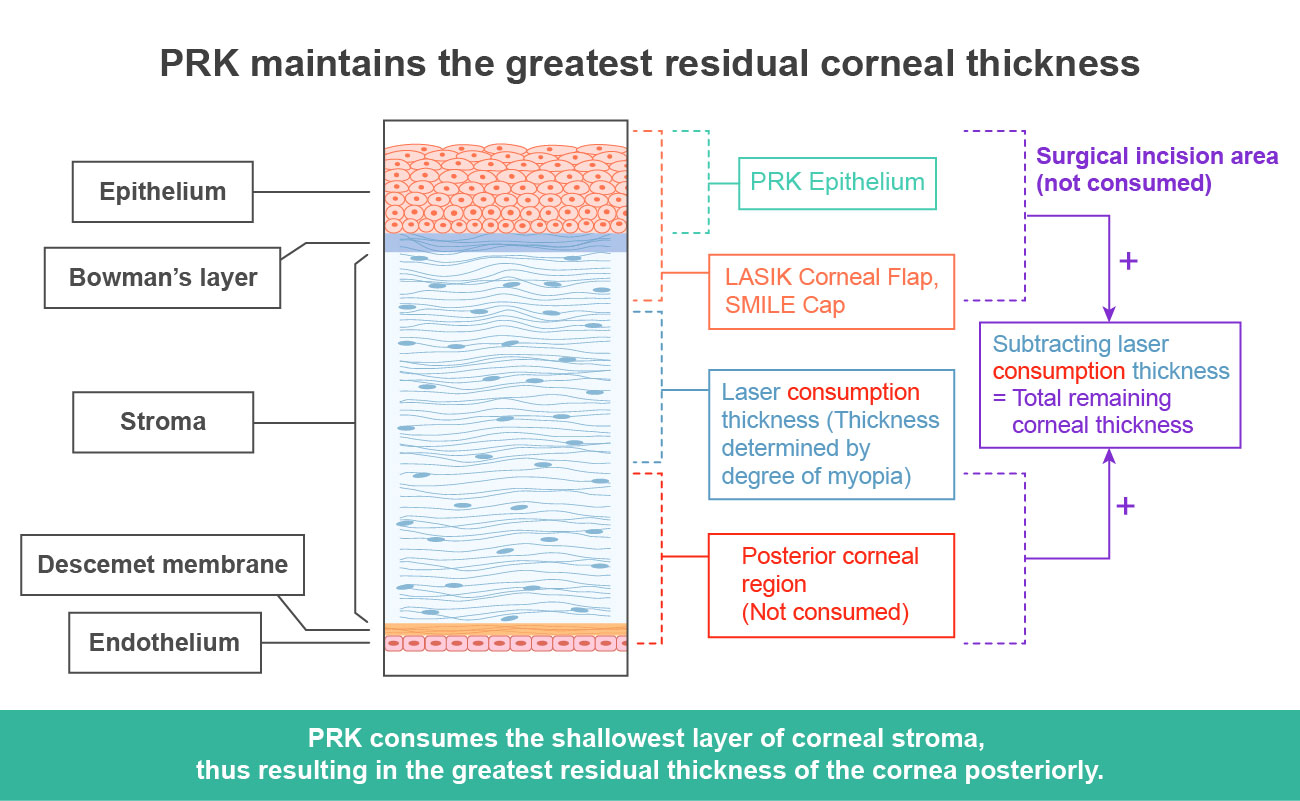
ifferences in 3 Common Laser Eye Surgeries
First generation: Photorefractive keratectomy (PRK):
- Can treat hyperopia, up to 1200-1400 degrees of myopia, 300-600 degrees of astigmatism
- The cornea has five layers. The outermost layer is removed first, and then the cornea is directly ablated with a laser to change the corneal curvature
- The wound is larger, with a recovery time of about 1 to 2 weeks
. Mild to moderate pain - The advantage is that there is no corneal flap, so the cornea will not be too thin after surgery, which is relatively stable
Second generation: Laser-assisted in situ keratomileusis (LASIK):
- Can treat hyperopia, up to 1200-1400 degrees of myopia, 300-600 degrees of astigmatism
- A thin flap is cut on the cornea, then opened, and the cornea’s middle layer is ablated with an excimer laser to change the corneal curvature. Finally, the flap is covered
- The corneal flap covers the wound, and the wound on the corneal surface is just a circular line, with significantly reduced pain and a recovery time of about 1 to 2 days
- The longest application time, continuous improvement in accuracy
Third generation: Small incision lenticule extraction (SMILE):
- Cannot treat hyperopia, up to about 1000 degrees of myopia, about 500 degrees of astigmatism
- The corneal flap is not completely opened. Only a 3mm incision is made on the periphery, the middle layer of the cornea is ablated with a laser to change the corneal curvature, and then the tissues are removed through the small incision
- The advantage is that there is no corneal flap, the cornea is relatively stable, and it does not damage the nerves, so there are fewer dry eye problems
- The wound is only 3mm, and the recovery time is about 1 to 3 days
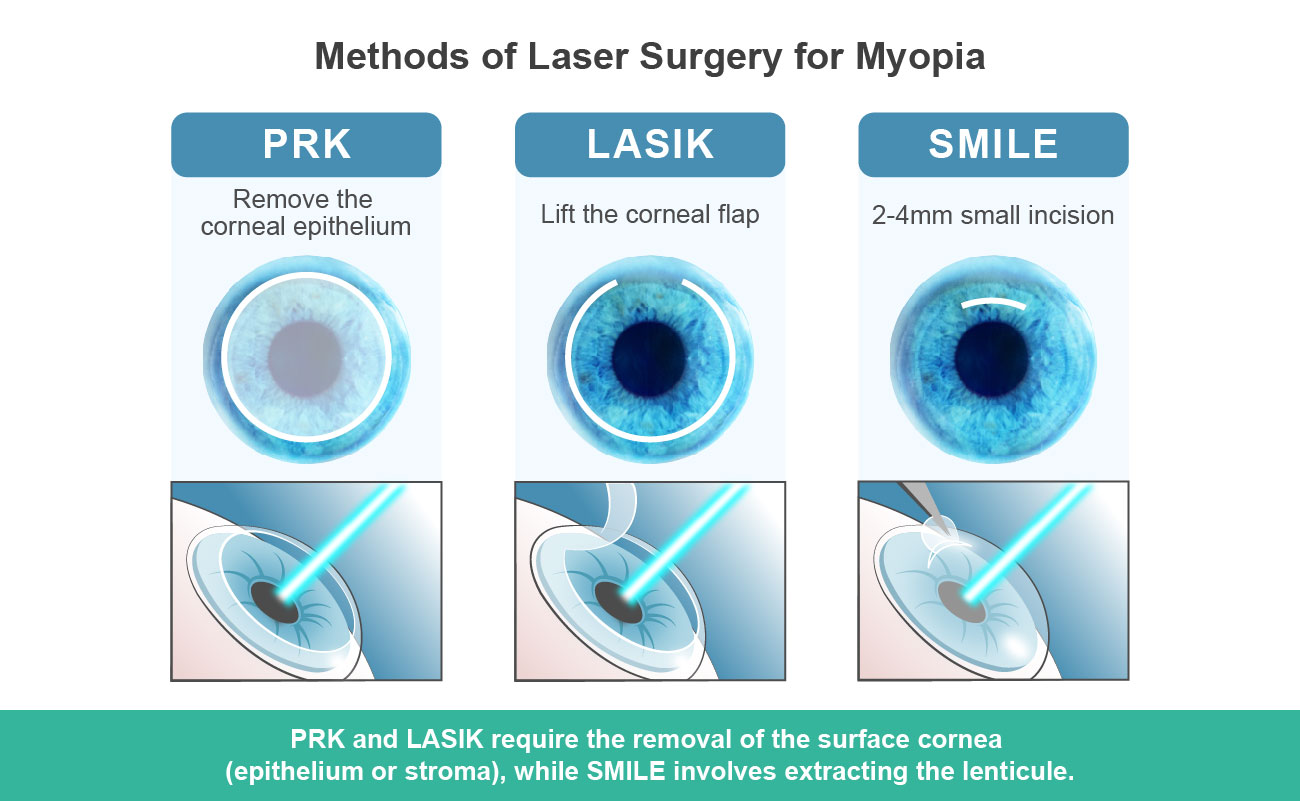
PRK and LASIK must expose a specific area of the corneal stroma layer before being treated with a laser. This is due to the limitations of Excimer lasers. PRK removes the corneal epithelial layer, and LASIK lifts the corneal flap. SMILE surgery can directly project the laser into the tissue; only a tiny incision is required to remove the lenticule. This is due to the advantages of Femtosecond lasers.
From the surgical process, we can understand that “wound structure, recovery speed, comfort,” SMILE surgery is superior to LASIK and PRK. So, is SMILE surgery better? Not necessarily. LASIK and PRK also have many unique advantages that SMILE cannot match.
Risks after Laser Eye Surgery?
The following side effects usually disappear within 3 to 6 months after surgery, but some risks may recur:
- Sensitive eyes:
Some people may feel burning within a few hours after surgery. It is normal after surgery, especially after LASIK. - Dry eye:
LASIK surgery may reduce tear secretion, especially in the first month after surgery, but SMILE surgery has less impact on corneal nerves, and dry eye problems may not be typical. - Changes in vision or photophobia:
Blurred vision, difficulty seeing at night, glare or halos when looking at lights, increased sensitivity to light, and feelings of pain and discomfort. - Under or over-correction:
Removing too little or too much corneal tissue will affect the degree of vision. - Eye infection:
The step of making a corneal flap is the risk of LASIK surgery. Although the probability of complications is less than 1%, it may lead to infection or excessive tear secretion; the minimally invasive incision of SMILE surgery reduces the risk of infection. - Loss of vision:
This is an infrequent surgical complication, with a less than 1% incidence rate.
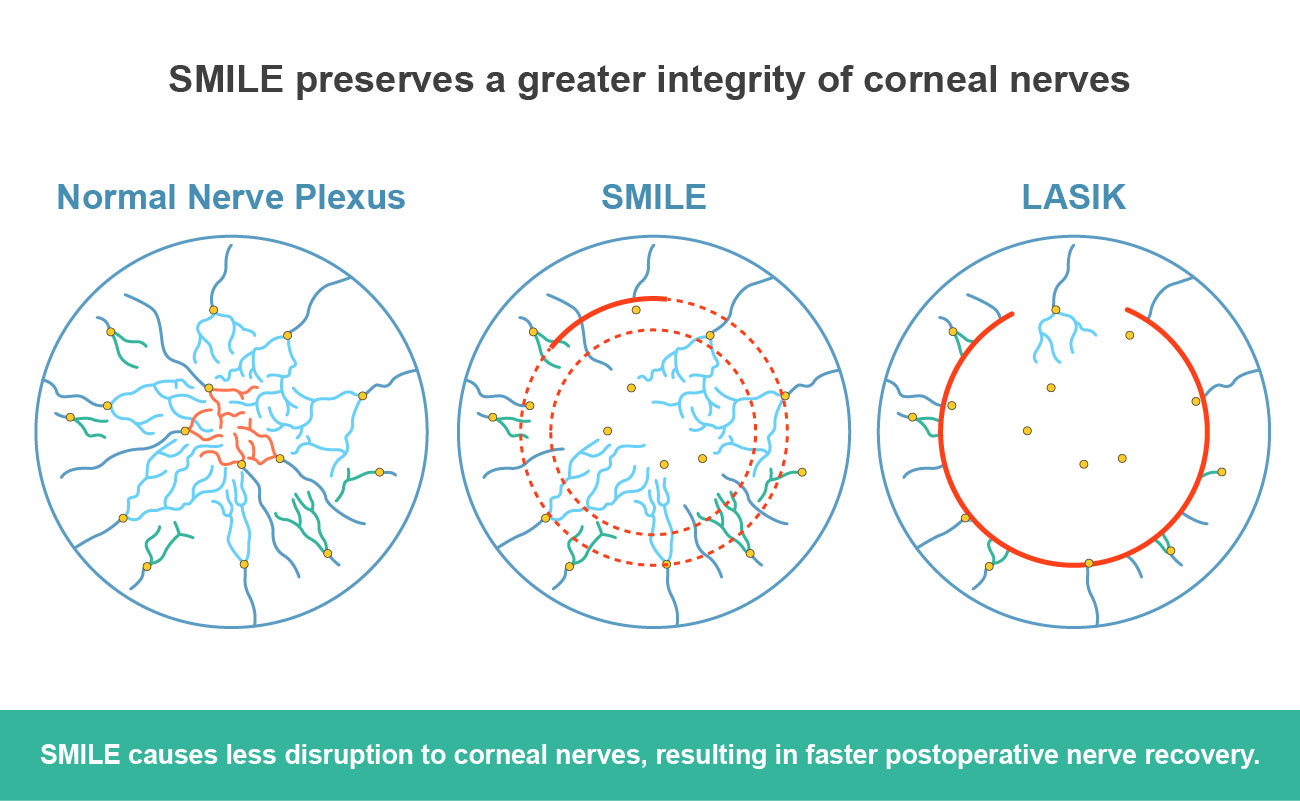
No matter which type of myopia laser surgery, short-term dry eye syndrome usually occurs after surgery. After the recovery period, there is usually no major problem. However, if dry eye syndrome is present before surgery, the risk of short-term dry eye syndrome changing into long-term dry eye syndrome will increase.
Because the surgery does not involve the tear glands, most people consider that dry eye syndrome is related to damage to the superficial nerves of the cornea.
The cornea has many nerves, similar to the “monitor” on the eye’s surface. When there is insufficient tear production, the nerves detect it and stimulate the tear glands to secrete tears. Laser eye surgery will cut the corneal nerves. The smaller the wound of the surgery, the more intact the corneal nerves can be preserved. If nerve recovery is not ideal, it cannot feed the tears insufficiently to the tear glands, leading to postoperative dry eye syndrome.
Because LASIK has the most extensive range of laser cutting, it is most prone to dry eye. As for PRK and SMILE, according to large-scale integrated analysis studies, dry eye is much less common than L.ASIK.
Below is a recommendation for Ursapharm HYLO INTENSE® and Hylo® series as a daily moisturizer to alleviate eye fatigue:
- Preservative-free and patented bottle design: Using the COMOD®-System patented technology, the eye drops are kept in a sterile state and sealed environment without the need for preservatives, maintaining the quality of the eye drops.
- Patented Hylo® hyaluronic acid: It is a hydrophilic molecule that can adsorb in water, forming a protective film on the eye’s surface. This helps maintain moisture and hydration and improves the tear film’s stability, helping protect the eyes.
- Patented Ectoin®: It increases the binding of water at
the cells of the ocular surface. This forms a physiologic barrier on the conjunctiva against allergenic acting substances. Simultaneously ectoine stabilizes the lipid layer of the tear film that protects against excessive evaporation of tears. - Drop-by-drop dosage Design: The COMOD® dosage system makes dispensing precisely one drop per pump stroke possible. This means the contents go a long way. The drop dispensed is the same size, producing a constant, reliable effect.

Friendly reminder: Consult your healthcare provider or pharmacist for advice before using this product if you are:
1. Pregnant or breastfeeding.
2. Infants or children.
